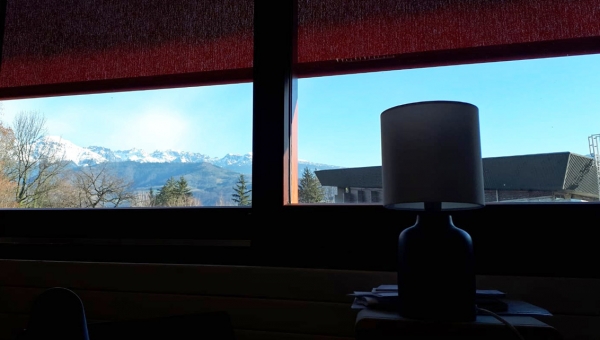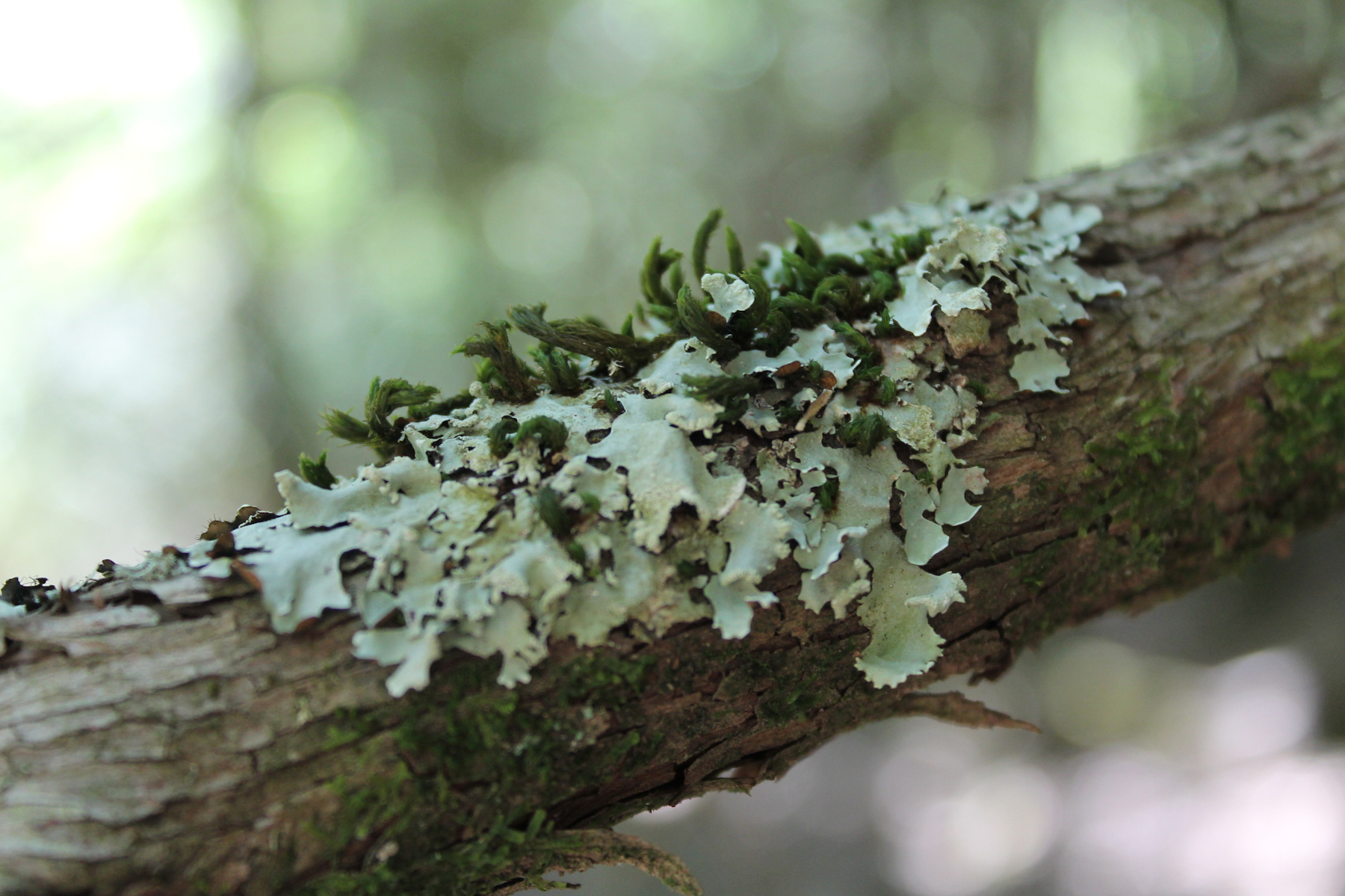The lichenologist Trevor Goward, with an intriguing definition, describes lichens as fungi that have discovered agriculture. They are a complex life form that is a symbiotic partnership of two separate organisms, a fungus and an alga (or cyanobacterium – or both). The result of such alchemy is a bizarre organism that can display a larger diversity in morphology, physiology, and biochemistry than other many organisms. Symbiosis in lichens is so well-balanced that lichens have been considered to be self-contained miniature ecosystems (Honegger 1991).

The “bubbles” are the symbol of Grenoble. They are the famous tourist cable cars, shaped as spheres, that, with a journey through the air, will bring you quickly to the top of the mount that watch over the town. In few minutes, you get right at the Bastille, so that you can keep your energy to continue the day trip to the other peaks.

The office I have been assigned when in Grenoble had a view on the mountains that surround the town. I am not used to it. I come from the biggest plain of Italy, where everything is flat, allowing you to scan the horizon very far from where you are. Mountains and hills can be seen, but they always seem so far.

The COST Action CA18207 will start from fungi, insects, herbs, spiders, lichens, mosses, and from all those small, often neglected organisms in a forest, to drive the manipulation of tree species through management strategies that are actually sustainable for biodiversity.



